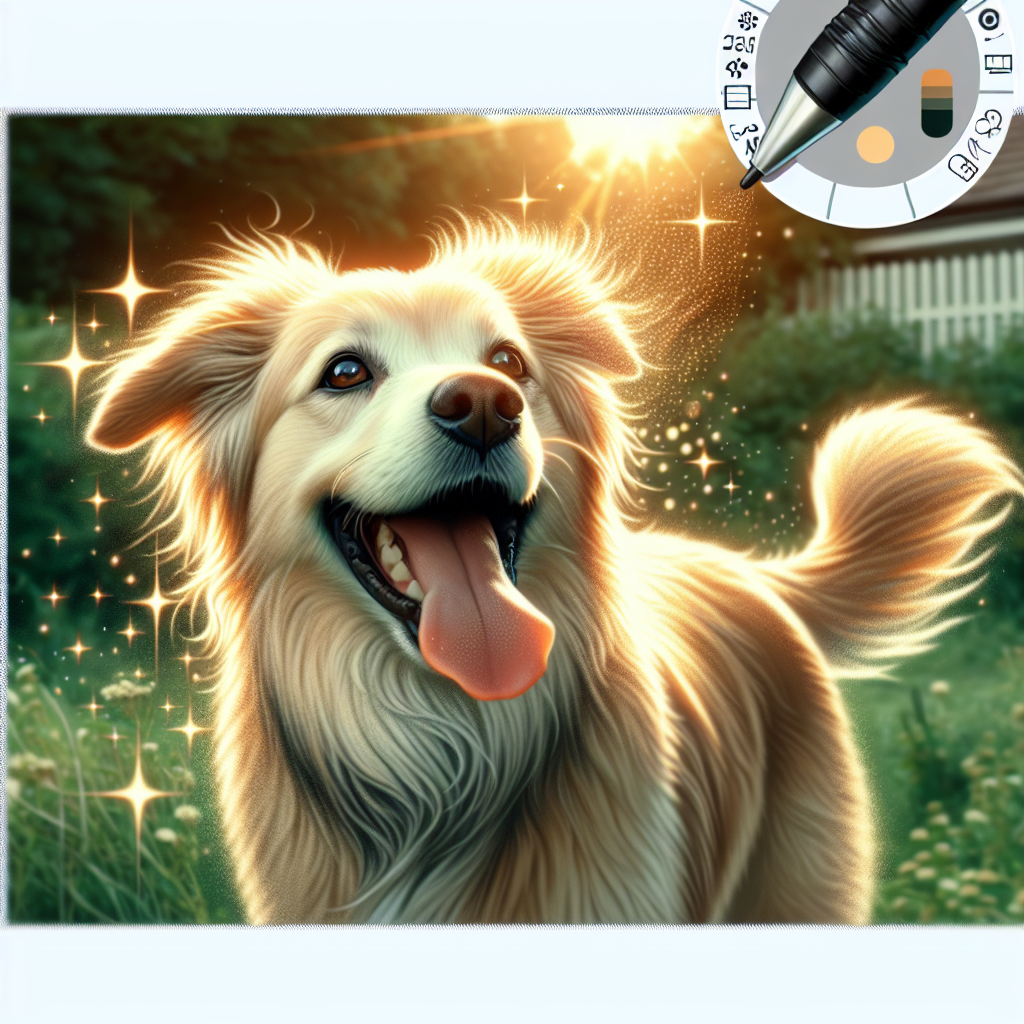Introduction

Flea infestations are like that uninvited guest who just won’t leave. One minute you’re enjoying a peaceful evening with your furry friend, and the next, you’re scratching at bites and chasing your tail to figure out how it all began. It’s a dance nobody wants to join, but here we are—so let’s tackle it head-on. I remember my first encounter with these bloodsuckers—my dog, Max, was scratching like a DJ at a rave. What started with a few bites turned into a full-blown invasion. If you’re in the same boat, you’re probably wondering how to start flea infestation control. Trust me, it’s a journey worth embarking on.
The Flea’s Playground: Understanding the Enemy
Ah, fleas. Tiny, elusive, and a bit too fond of your pet’s coat. If we’re going to win this war, we need to understand flea behavior in homes. Picture your home as a flea amusement park—carpets, pet beds, and upholstery are all part of the fun. Fleas love to hide in cozy spots and lay eggs, ensuring their legacy continues. They’re not just hitching a ride on your pet; they’re making themselves at home—in your home. My buddy Dave once said, “Fleas are like bad houseguests; they take over the place.” He wasn’t wrong.
Spotting the signs early is key. Fleas are quick, tiny, and love to play hide and seek. You might notice your pet scratching or biting at their skin more than usual. If you see tiny black specks in their fur—flea dirt—you’ve got company. These pests multiply faster than you can say “flea infestation cleaning tips,” so staying one step ahead is crucial.
War Zone: Your Home and Those Pesky Critters
Your home is now a battlefield, and every corner is a potential hideout. I’ve been there, armed with a vacuum and a bottle of flea spray, ready to reclaim my territory. Start with a daily vacuum routine for flea control. It might seem tedious, but it’s your first line of defense. Focus on the areas where your pet likes to lounge. Those spots are likely flea hotspots.
The vacuum is great, but sometimes you need to bring out the big guns. Controlling fleas with steam is another effective method. Fleas hate heat, and steam cleaning your carpets and furniture can help eliminate those sneaky eggs and larvae. Remember that time I nearly passed out from all that vacuuming? Yeah, it’s a workout, but it’s worth it.
Another trick up your sleeve? An effective flea spray for home use. It’s like bug spray, but for fleas. Apply it to baseboards, under furniture, and any place you suspect fleas might be hiding. Don’t forget your pet’s bed—wash it in hot water regularly. My old pal Charlie used to say, “A clean house is a flea-free house.” I’m pretty sure he was onto something.
Weapons of Mass Destruction: Tools for the Battle
Now, let’s talk weapons. Flea treatments for pets are essential. Whether it’s a topical treatment or an oral medication, these products can prevent fleas from turning your pet into a buffet. Consult your vet for the best options—don’t just grab the first thing you see on the shelf.
Speaking of tools, don’t underestimate the power of a good flea comb. It’s like a metal detector for fleas—run it through your pet’s fur, and you’ll catch any freeloaders. I remember finding a few on Max and feeling like I’d won the lottery—gross, but satisfying.
And don’t forget about preventative measures. Treat your yard, too. Fleas can lurk outside, waiting for your pet to step foot in their domain. Use yard sprays or granules to keep them at bay. Your home should be a fortress, and that means defending it from all angles.
Daily March: Routines to Keep Fleas at Bay
Fighting fleas isn’t a one-and-done deal. It’s an ongoing battle. Establish a routine to keep fleas at bay. Regular grooming, checking your pet for fleas, and keeping your home clean are all part of the package. I’m not saying turn your house into a sterile lab, but a little effort goes a long way.
Consistency is key. Stick to your cleaning schedule, and don’t slack on treatments. It’s like brushing your teeth—skip a day, and you’ll pay for it later. Remember that time I got lazy and skipped a vacuum session? Yeah, my ankles regretted it.
So, here’s to you, brave flea warriors. Thanks for taking the time to read this and for fighting the good fight. With a little grit and determination, you’ll conquer those pesky critters. Keep your chin up, your vacuum ready, and your sense of humor intact. You’ve got this.
The Battle Begins: Spotting the First Signs of Fleas
You know those moments when your pet starts scratching like they’ve got a dance floor of their own? Yep, that might be your first clue. Fleas are the tiny tormentors turning your furry friend into a scratching machine. Watch out for the classic signs of flea infestation in pets like excessive licking, biting, and those telltale red bumps. It’s like they’ve got a secret party going on under their fur.
Now, you might think, “Hey, it’s just a scratch.” But don’t be fooled—these little pests multiply faster than rabbits. One flea can lead to a hundred. No kidding. Check for flea dirt, which looks like black pepper on your pet’s skin. It’s flea poop, let’s call it what it is. Wet a paper towel and dab it on the black spots. If it turns reddish-brown, congrats, you’ve got fleas.
This is where the battle begins. It’s not just about getting rid of the fleas you see. It’s about stopping the invasion before it turns your cozy home into a flea hotel. Are you ready for the challenge?
Flea Control for Your Home: More Than a Vacuum
Alright, so you’ve got the jumpy invaders in your house. Now what? Just vacuuming isn’t gonna cut it. Fleas are sneaky little buggers, hiding in carpets, bedding, and even that old armchair your cat loves. You need effective flea control for home. Think of it like war—every corner needs attention.
Start with vacuuming daily. It’s a good start but not the whole solution. Empty the vacuum bag immediately, or those fleas will be back before you know it. Washing pet bedding in hot water helps, too. But if you’re serious about reclaiming your home, consider flea sprays or powders designed for home use. They target larvae and eggs, not just the adults giving your pet a hard time.
Natural flea repellents like diatomaceous earth can help, too. Dust it in the nooks and crannies of your home. It’s like sending those critters to a desert without water. And don’t forget to treat your furniture and curtains. Fleas love to play hide and seek, and they’re darn good at it.
Tackling the Outdoors: Yard Treatments That Work
Let’s not leave the outdoors out of this flea-fighting saga. Your yard might be a flea breeding ground. They thrive in warm, shady spots. So, what’s the best yard flea treatment? The answer’s simple—get rid of their hideouts.
Mow your lawn regularly and trim the bushes. The less cover they have, the fewer places they can breed. You can also use yard sprays designed for fleas. They’re like a SWAT team for your grass. But remember, these sprays can be harsh, so follow the instructions like it’s a treasure map.
For the more eco-conscious warriors, there are natural options. Nematodes are tiny worms that love to feast on flea larvae. Imagine them as your secret army beneath the grass. They’re effective and safe for pets and humans. And let’s not forget cedar chips. Fleas hate the smell of cedar, so spread some around your yard and watch them pack their bags.
Flea Medications: Pills, Drops, and Collars
Here’s where it gets a bit medical. Flea medication for dogs and cats comes in all shapes and sizes—pills, drops, and collars. It’s like a flea buffet of doom. But which one’s right for your pet?
Pills are quick and effective. They work from the inside out. Drops, on the other hand, go between the shoulder blades and keep those fleas at bay for weeks. They’re like a force field for your pet. Collars are great for long-term protection, especially if your furry friend loves the outdoors.
Talk to your vet about what’s best. Don’t DIY this one. Some medications are breed-specific, and you don’t want to mess that up. It’s about finding the right fit for your pet’s lifestyle. And remember, these medications aren’t just about treatment—they’re about preventing flea infestation from turning your life upside down.
The Long Haul: Keeping Fleas Away for Good
So, you’ve fought the good fight, but how do you keep those fleas from coming back like uninvited guests? Flea prevention tips are your best friend here. Regular grooming is key. It’s not just about keeping your pet looking dapper—it’s about spotting any new invaders before they multiply.
Vacuum your home like it’s your new workout routine. Wash pet bedding often. And don’t forget to check your pet after outdoor adventures. Fleas are opportunists, always ready to hitch a ride.
Consider preventative flea treatments year-round. It’s like insurance for your sanity. And keep your yard trimmed and treated. It’s a small price to pay for peace of mind.
In the end, it’s about persistence. Fleas might be tiny, but with the right approach, you’re bigger. You’re smarter. You’ve got this. Thanks for sticking with me through this flea circus. Here’s to a flea-free future!
The Flea Struggle: Real Stories from Pet Owners
You wouldn’t believe some of the flea infestation stories I’ve heard. Picture this—you’re sitting on your couch, minding your own business, when you spot a tiny jumper on your arm. It’s just the tip of the iceberg. Meet Sarah. Her battles began when her dog, Max, started scratching like he was auditioning for a flea circus. She didn’t think much of it at first—just a couple of itches here and there. But, oh boy, was she wrong. Fleas spread faster than gossip at a family reunion.
Max’s fur became a battleground, and Sarah’s house? A flea haven. She tried everything under the sun, swatting those little devils day and night. It’s a tale as old as time—pet owner vs. flea. The sneaky pests were relentless, making themselves at home in her carpet, her bed, even her socks.
Then there’s Tom, whose cat, Whiskers, turned his life upside down. Fleas had made their way into every nook and cranny. Tom tried to ignore it, but the constant scratching from his feline friend was as subtle as a marching band. Fleas don’t discriminate—they’ll hitch a ride on anything warm-blooded, and before you know it, they’ve taken over.
The Flea Battle Plan: Steps to Take Today
So, you’ve got fleas. Welcome to the club. The first step is acceptance, but don’t get too comfy with that. The real deal is coming up with steps to get rid of fleas. Start by vacuuming like there’s no tomorrow. I’m talking every day, maybe twice if you’re feeling ambitious. Fleas love a good rug party, so make sure you crash it.
Wash everything. Your pet’s bedding, your bedding, your clothes—basically anything that can fit in the washing machine. Hot water is your new best friend.
Next, get your hands on a flea comb. It’s a small tool, but boy does it pack a punch. Comb through your pet’s fur and watch the fleas fall like rain. It’s oddly satisfying.
Don’t forget about flea treatments for your pets. There are plenty out there, but make sure you consult your vet. They’ll guide you through the jungle of options.
Holistic Approaches: Natural Remedies for Fleas
Now, if you’re like me and prefer a more holistic flea treatment, there’s hope. Natural flea remedies for pets can be a game-changer. Ever tried diatomaceous earth? It’s a mouthful, I know, but sprinkle this around your home, and fleas will be checking out faster than guests at a loud hotel.
Essential oils can also come to the rescue. A few drops of lavender or cedarwood oil mixed with water can make a nifty spray. Just don’t go overboard—your pet’s nose is more sensitive than you think.
And let’s not forget the power of vinegar. A bit of apple cider vinegar in your pet’s water can make them less appealing to fleas. It’s like turning your pet into a walking flea repellent.
Sometimes, the simplest things work wonders. A good old-fashioned bath can wash away a surprising amount of fleas. Just be sure to lather up and rinse thoroughly.
When to Call the Pros: Seeking Expert Help
Sometimes, though, the flea war gets out of hand. You’ve tried everything, but those pests are as stubborn as a mule. When the going gets tough, it might be time to call in the cavalry—professional flea extermination services.
These folks know their stuff. They’ve got gadgets and potions that would put a wizard to shame. Sure, it might cost a pretty penny, but think of it as an investment in your sanity.
Calling professionals doesn’t mean you’ve failed. It means you’re taking control. You’re the captain of your ship, and sometimes, a little help from the experts can steer you away from the rocks.
Moving Forward: Keeping Your Home Flea-Free
Once you’ve won the battle, the key is preventing fleas in the home. Prevention is better than cure, as they say. Start by keeping your yard tidy. Fleas love shaded, damp places, so make sure your garden isn’t a flea spa.
Flea collars or monthly treatments can keep your pets flea-free. There are plenty of flea prevention tips out there, but consistency is your ally.
Regular vacuuming should become second nature. Wash your pet’s bedding on the reg. And don’t forget to keep an eye out for the telltale signs—scratching, biting, and those pesky little black dots.
Now, as you journey on this flea-free path, remember—you’ve got this. It’s a wild ride, but with a little grit and determination, you can keep your home flea-free. Thanks for sticking around, and may your days be itch-free!
Quick Takeaways:
Fleas are tiny vampires. They invade your space, bite your pets, and refuse to leave. If you’ve got a flea infestation, help is on the way. First things first—understand how they operate. These little jumpers hang out in carpets, pet beds, and dark corners. They thrive in warm and humid spots. This means you might need to crank up the A/C or the heater to make them uncomfortable.
Your vacuum cleaner is your new best friend. A daily vacuum routine for flea control? Absolutely. It’s like a mini-battle every day. Suck those critters up from carpets, rugs, and furniture. Then, toss the vacuum bag outside. Next, think about flea treatments for pets. Your dogs and cats need the frontline defense. Use flea medication regularly. Don’t skip doses.
Got fleas in your yard? That’s a whole other battlefield. Best yard flea treatment involves keeping the grass cut, removing debris, and maybe even using some natural flea repellents.
Steam cleaning? Yep, it’s a secret weapon. Controlling fleas with steam can kill the eggs and larvae hiding in your carpets and furniture. An effective flea spray for home use can also keep them at bay. Keep in mind—flea infestation cleaning tips are a dime a dozen. But the real kicker is consistency. Stay on top of it. In short, understanding flea behavior in homes is crucial to kicking them out.
FAQs:
1.
What are the first signs of flea infestation in pets?
Your pets will let you know. Persistent scratching, biting, or licking are red flags. Look for flea dirt—tiny black specks on their fur. Check their bedding and soft furniture—any sign of fleas? You might see small, dark bugs jumping. If so, it’s time to start flea infestation control.
2.
How can I effectively control fleas at home?
Start with a daily vacuum routine. Don’t just hit the high spots—get into corners and under furniture. Use an effective flea spray for home areas, especially where your pets hang out. Steam cleaning carpets and upholstery can be a game-changer. The heat kills flea eggs and larvae. Also, use natural flea repellents like diatomaceous earth.
3.
What should I do about a flea infestation in my yard?
First, mow the lawn and remove debris. Fleas love tall grass and piles of leaves. You might need the best yard flea treatment, like nematodes. These microscopic worms eat flea larvae. They’re the good guys. Keep your yard clean and dry to prevent fleas from making a comeback.
4.
What flea treatments are safe for pets?
You’ve got options. Flea medication for dogs and cats comes in many forms—oral tablets, topical treatments, and collars. Always read the label. Check with your vet if you’re unsure. Never use dog products on cats or vice versa. Some flea treatments can cause reactions, so keep an eye on your pet after application.
5.
Can I prevent a flea infestation from happening again?
Absolutely. Regular cleaning is key. Vacuum often and wash pet bedding at high temperatures. Flea prevention tips include keeping your yard tidy and using flea treatments for pets year-round. A holistic flea treatment approach can also help—consider using essential oils like lavender or cedarwood. They’re natural deterrents.
Conclusion:
So there you have it—the flea saga is no joke. They’re stubborn little beasts, but with some elbow grease, you can evict them. Flea infestation help is all about being proactive. Don’t wait until you’re knee-deep in bites and scratching. Start with a solid plan. Vacuum like your life depends on it. Treat your pets, clean your home, and don’t forget the yard. It’s a trifecta of flea control.
Remember, consistency is your secret weapon. Don’t slack off once you think you’ve won. Fleas can come back faster than you’d expect. Keep up with treatments, clean regularly, and be vigilant. You’ve got this. With a bit of effort, your home will be flea-free in no time. Thanks for sticking with me through this flea circus. Here’s to a scratch-free tomorrow!
References:
1. https://www.epa.gov/pets/controlling-fleas-and-ticks-around-your-home
2. https://www.cdc.gov/fleas/prevention/index.html
3. https://www.rspca.org.uk/adviceandwelfare/pets/general/fleas
4. https://uk.frontline.com/pet-advice/seen-multiple-fleas-house
Our solution eradicates fleas on contact without harmful chemicals, ensuring a safe environment for your pets and family. Easy to use and highly effective, SayByeBugs helps you maintain a flea-free home. Learn more and order today at SayByeBugs.com
Our solution eradicates fleas on contact without harmful chemicals, ensuring a safe environment for your pets and family. Easy to use and highly effective, SayByeBugs helps you maintain a flea-free home. Learn more and order today at SayByeBugs.com








